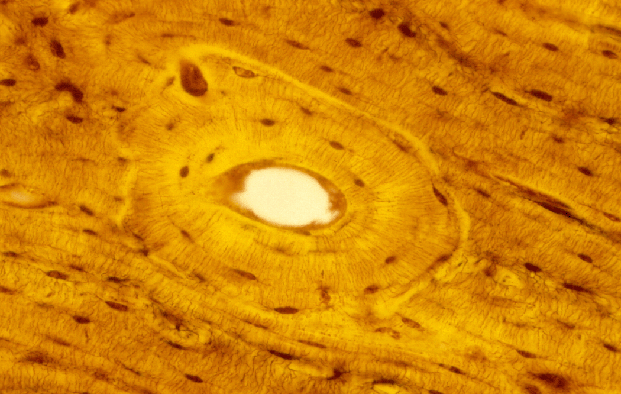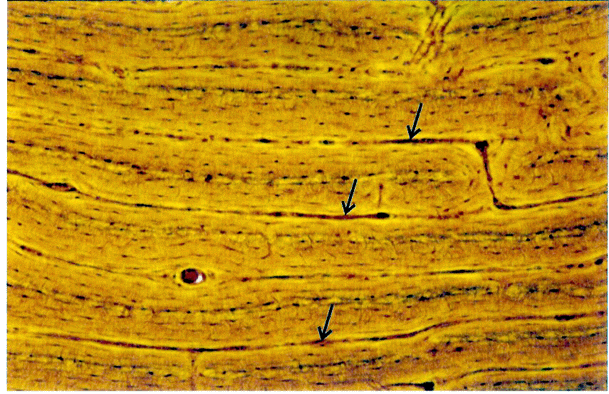UL2.H1.3 +D1 +D2 Compact Bone
Compact Bone:
- In compact bone, the bone cells and extracellular matrix are organised into close-packed units of bone known as osteons
- Compact bone is typically found in the diaphysis of long bones and as a covering of the cancellous bone which is found in the epiphyses
- Osteons, also known as Haversian systems, are the subunits of compact bone
- Osteons are highly organised
- They have a central canal which is lined by osteoblasts and contains a blood vessel
- Lamellae of bone, containing osteocytes located within lacunae, are found in concentric layers around the central canal
- The osteocytes in each lamella are connected to each other, and to the osteocytes in more central lamellae, by cytoplasmic processes which run in small channels (canaliculi) in the bone martrix
- These processes connect the layers of bone tissue with the central canal and provide the route through which nutrients are distributed
- Osteons are basically cylindrical, with the blood vessel at the central axis of the cylinder
- Irregular areas of bone tissue fill-in the areas between the osteons
- Throughout life, osteons are broken down and replaced as part of the normal maintenance of bone
An Osteon in cross section:
- In life, the space in the middle of the osteon would contain a blood vessel
- The tissue between the blood vessel and the bone matrix would include osteogenic cells and, on the surface of the bone matrix, osteoblasts

An osteon in cross section
Osteons in cross section:
- Notice the blood vessels (arrows) which form the central axis of each osteon

Osteons cut in cross section
